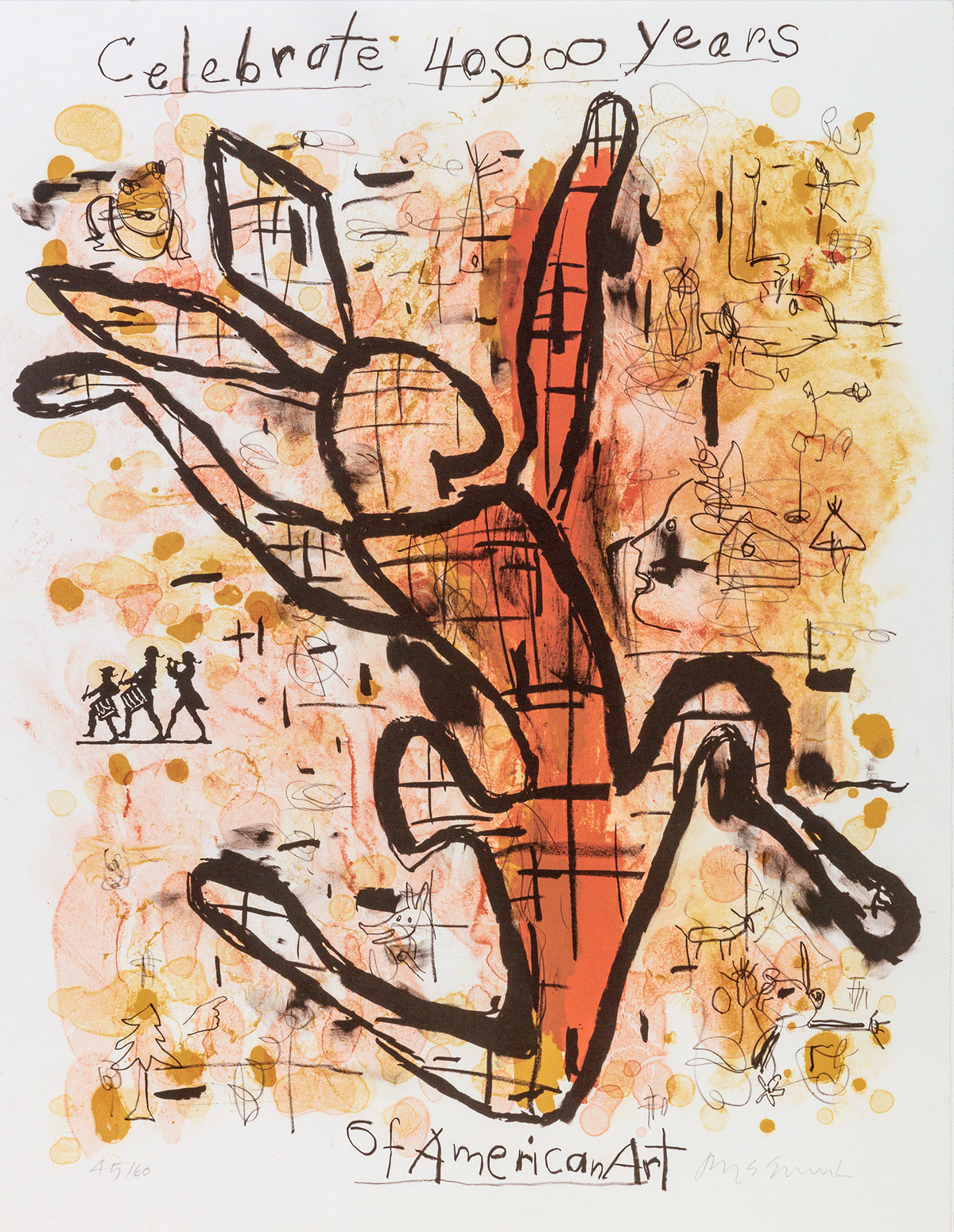“Art should reveal the unknown, to those who lack the experience of seeing it.”
Since the 1970s, Jaune Quick-to-See Smith has been creating complex abstract paintings, drawings, and prints which depict the histories, experiences, and diverse and changing identities of Native American peoples. She conveys her sociopolitical commentary through layering cultural and symbolic references with art history and personal narrative.
Smith’s print Celebrate 40,000 Years of American Art was made in response to the fifth centennial of Christopher Columbus’s arrival to the Americas. Smith claims her heritage as an American artist and extends the history of American art to include the earliest indigenous peoples on the continent. The rabbit is featured primarily because of its long-term presence in Western art and cultural iconography. Think Bugs Bunny, Playboy Bunny, Jeff Koons, Peter Rabbit, Easter Bunny…the list goes on. It also plays a significant role in Native American creation stories of the Cree, Ojibwe, and Chippewa tribes. The standing rabbit in particular is referenced world-wide as a “trickster” and is here to help Smith see through what she calls her “little spoof.”

Smith’s Trade Canoe paintings address both the mass dispossession of Native peoples from their land as well as the continued appropriation of their culture. Some key sources in this piece are Salish Kootenai writer D’Arcy McNickle’s 1936 book The Surrounded, neo-expressionist Philip Guston’s painting Cigar (1969), and figural heads depicted in Mayan culture.
